Subscribe now and get the latest podcast releases delivered straight to your inbox.
Google Ads vs Facebook Ads
Google Ads can be faster to get started with and have a wider potential reach than Facebook Ads, but Facebook Ads can offer more nuanced targeting with its pixel and potentially much more powerful tracking insights than Google Ads. Despite these differentiators, using an omni-channel ads strategy that includes both Google and Facebook Ads is ultimately the best course of action.
When it comes to paid media, Google Ads and Facebook Ads are the biggest players in the market. If you’re just starting out, how can you know which is the best for your business’ needs?
According to paid ads experts Ali Parmelee and Jason Linde, a blended approach is the way to go because it can take advantage of both platforms’ strengths — and it allows you to shift budget and strategy between platforms as needed.
In other words, it should not be Google or Facebook, it should be Google and Facebook.
However, a head-to-head comparison can yield important insights into each platform. And it was in this spirit that I sat down with Ali and Jason to hear their thoughts.
Before we begin, it’s important to remember that each of these giants is an umbrella company that includes important subsidiaries.
When we talk about Facebook, we’re also talking about Instagram, What’sApp, and Facebook Messenger. Google also includes YouTube, the second—most trafficked site in the world (behind Google itself).
Cost
John: Let’s start with the question on everyone’s mind: Cost per click.
Google expert Jason Linde: I would say, with this particular topic, there is no real definitive number, but there is a process.
There are some resources available for benchmarking, like AdStage, which will give you benchmarks for Q1 through Q4.
They're a big organization with access to a lot of accounts. They take data from those accounts and then average it out, to create a base stat for you to use when planning your ad spend.
There are also some tools that can help you get to a close estimate for your brand and industry.
Keyword Planner, a tool that lives inside the Google Ads platform, will give you some insight into the average cost per click (CPC) you can expect based on the keywords you plan to target in your ads. It's easy to use; simply put your core keywords in and get some feedback and see what Google has to say.
Google Keyword Planner:

There are also other tools like Keywords Everywhere, which is a Chrome extension. Once you have it installed, the extension will show you real time keyword data whenever you enter a search query on Google.com.
KeyWords Everywhere:
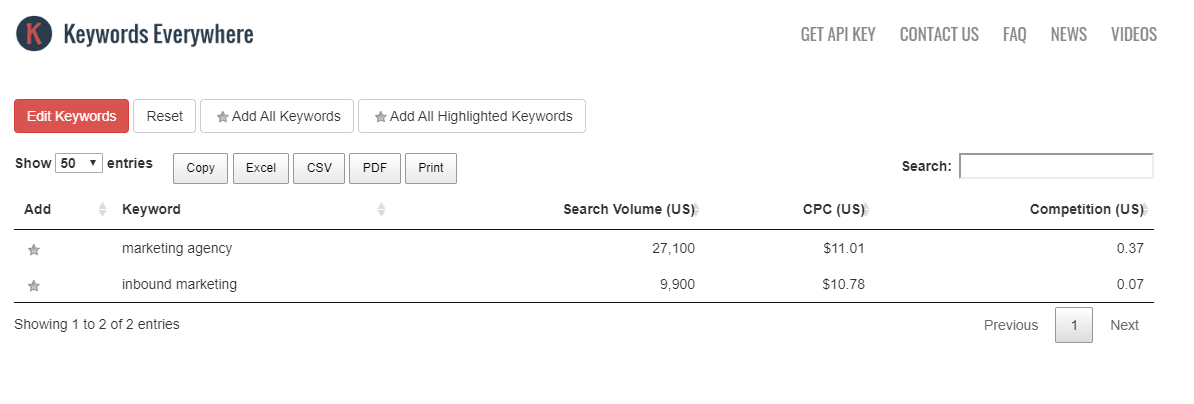
What's nice about these tools is they will look at local, national, and international keyword usage — and also sprinkle in Amazon and YouTube.
So having said all of that, coming up with an average CPC, it's really about supply and demand. It can take a bit of time to dial it in.
We work with the client to understand what keywords are important for their brand and industry, then we do some research to get a benchmark and say, “Okay, this is roughly on average what we should expect to spend.”
Most verticals are pretty obvious. If we're talking to a lawyer, or in a field that's high competition, you're looking at $50 to $100 CPC.
If we're looking at super small space, with not a lot of competition, we could be looking at pennies to just over a dollar. So it's going to vary, so we help clients know what to expect.
This helps with pre—budgeting and planning.
Once you have some data, you can see. We say, okay, we planned on a max of $5 CPC, hoping for $2 per click.
If you find you’re not getting anywhere, and it's costing $10, we'd go back and rework or retool budgeting.
Facebook expert Ali Parmelee: It’s the same on Facebook. The price of running Facebook ads really varies, because every industry is different. There are some general rules of thumb, but you have to look at a company's metrics, their benchmarks — and remember these are going to shift, because you're going to have seasonality.
But with that said, your CPC should be anywhere from $1 to $3 for Facebook, if it's over $3 you're doing something wrong. That is a general truth for us.
But that's just a cost per click, that's not a cost per acquisition, impression or conversion.
For example, you could see the CPA for leads could be $50 to $100, it's just entirely different based on industry (this is a handy guide from WordStream if you’re looking for details for a specific industry).
John: But what if you were in the same industry comparing one platform to the other, is CPC going to be higher for the same company on Facebook or on Google Ads?
Jason: It’s going to be higher on Google Ads. I think Google is always going to ultimately lose that battle to Facebook.
Getting started
John: What about getting started? Is one platform easier than the other?
Ali: If you are just getting started in Facebook Ads, you need to give yourself a little bit of time to get your house in order.
You need to look at how strong your business' Facebook page is. Are you posting frequently? Are you getting good engagement with your fans and followers? If the Facebook page is weak, you need to get some love there, or else Facebook is going to think that you're fake news trying to spam people.
This is a pretty healthy one:
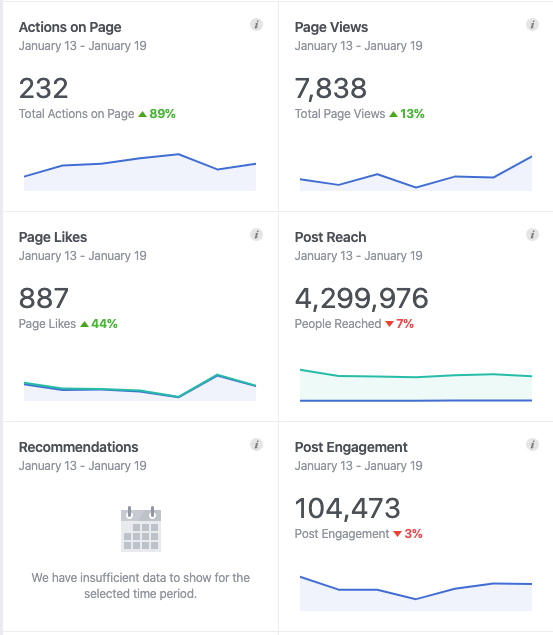 There are also some basic technical things that need to happen so that you're actually advertising correctly, and not just wasting your money.
There are also some basic technical things that need to happen so that you're actually advertising correctly, and not just wasting your money.
The most important thing to do is install your pixel, which is easy if you're on HubSpot, WordPress, Shopify (any of the major platforms). It's pretty much turnkey at this point.
Also, make sure you set up the standard pixel events like Complete Registration and View Content. This will let you set objectives when building your ad targeting.
Note: With iOS 14 rolling out shortly, you will be limited to eight pixel events, so read up on that and choose your events carefully!
Once you get your pixel properly installed, you need to keep building your foundation.
Next up are audiences. The pixel lets you retarget website traffic, but you can't stop there. You need to build audiences to find net—new people, and the best way to do that is through lookalike audiences.
If you have at least 2000 people in your email list, you can start building some lookalike audiences from your opt—in list.
Technically, you can create a lookalike from a seed audience of 100 people, but I never do that unless I have at least a couple hundred. The more data in the seed audience, the better your lookalikes will be. You can also create lookalikes of your site traffic too.
Once you have your pixel installed, you've got your standard events on your pages, you've got your audiences, you've got a good database of assets to work off of, you’ve got engagement on your Facebook page, you’re consistently posting content, you’ve got an editorial calendar in place — then you can start moving forward.
Assuming that you've met the first set of criteria, you can develop your plan and start developing a full—funnel strategy.
Long story short — Facebook is not a plug—and—play ads option. There's a lot of prep work to do.
John: Say you are a business that has a healthy Facebook presence. How much time would it take to start getting your ads up?
Ali: It takes about two to three weeks to get all of the background stuff done, and then get your strategy built out properly, and then by the fourth week we can start launching your ads.
Jason: Ali’s right: there's always like a checklist that should happen before any client, including ourselves, should jump into building the ads out and then spending the first penny. That holds true no matter what platform.
That said, I think Google does an amazing job making it super easy to launch.
Google makes it so easy that a person could in theory quickly be up and running with an ad within minutes.
The problem about that is that a quick setup approach usually means giving the keys over to Google. You've told the platform about your budget and goals, and it's just doing things on your behalf.
The problem with letting Google do its thing is that Google wants to make money. Without you there to set some guardrails, you can't be 100% sure that the algorithm is making the best choices for your business.
Can Google Ads be faster to stand up than Facebook Ads? Yes. Does that make them the better bet for your business? Not necessarily.
Ease of use
John: Can you both talk about ease of use, once you’re up and running?
Jason: Google Ads Express is super easy because it's just a dashboard and it’s easy to understand what you're looking at. But that's the Express version, not the Advanced.
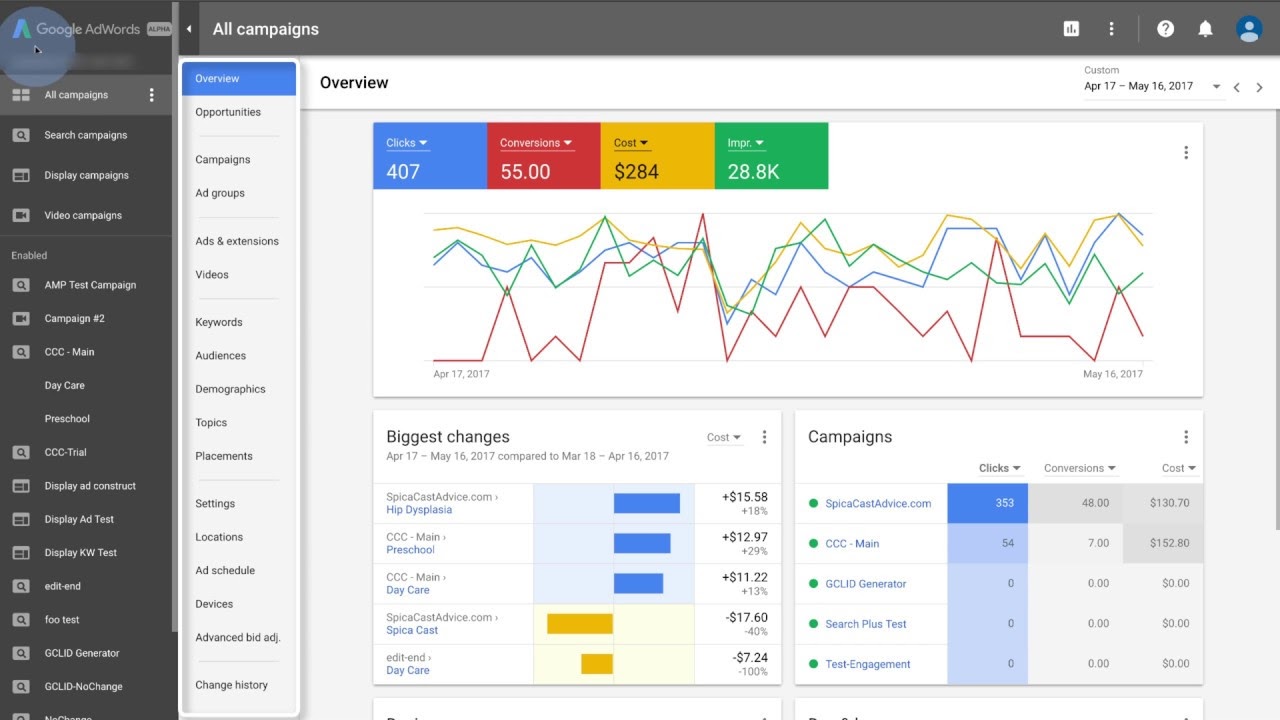
The Advanced version of Google Ads is a lot more difficult to navigate, with multiple areas to dive into.
So I think that in terms of ease of use, Express is super easy. In Advanced, it's going to take some time to understand where to find the things, and which levers are you able to turn on and off.
It can be pretty complicated.
Ali: For Facebook, you have ads manager, and that's where you're running ads from, regardless of whether you're doing a simplified version, or doing really a comprehensive version. Any money that you're spending in ads shows up there.
To me it's really simple and straightforward because I live and breathe in it, and it seems so intuitive to me.
But I think it can be very intimidating for clients and general users because they realize that you are in the window view of your media buying, and if you touch anything you could actually break it.
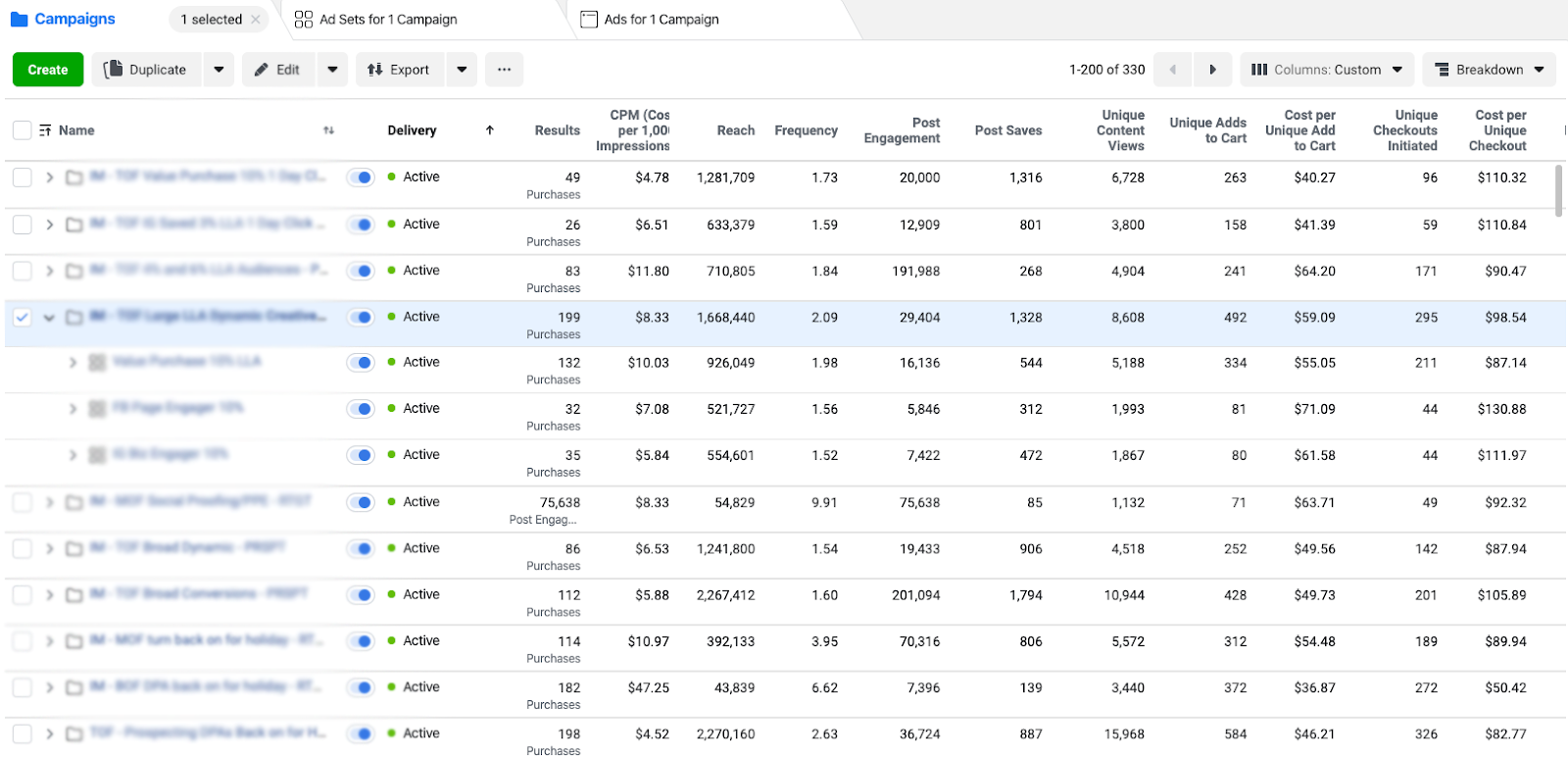
Jason: Ali makes it look so super easy!
I think both platforms make it easy to get started. What you do afterwards — that's the daunting part.
For example, a few years back Ali jumped into a client account and put a nice framework together, then rolled out a whole set of nice ads. After a few weeks of successful selling, a product featured in one of the ads was out of stock so the client decided to remove that ad.
Sounds pretty simple. Except they literally deleted the whole entire campaign, and it was something that could not be brought back. All that data was gone, the ads were gone.
So that client was like, I'm not touching that account ever again!
Reach and targeting ability
John: Can you talk about reach and targeting ability?
Ali: Whenever we're working on our paid ads strategies, we're looking to answer:
- How do we attract ice cold new people?
- How do we nurture the people who are in our funnel?
- How do we just help people get across that finish line if they're interested in something, but haven't pulled the trigger yet?
Ultimately, the better your brand is, the easier it is to reach and retarget people. This is because we use everyone who engages with your business' Facebook page as seed audiences for our lookalikes for top of funnel.
Think of it this way: If you've saved a post, I can target you, if you've interacted through direct message with me, I can target you, if you've been on the site, I can target you, if you've liked or engaged with page post or ads, I can target you. And that's not even getting into more complex stuff.
So I can create my lookalikes off of those actions and Facebook helps to find people who behave like those people.
You also get an added benefit with Facebook; you can do interest—based targeting.
But without a doubt, as long as you have good data, lookalikes all day long are going to be better for you than interests.
If we're on a tight budget, we don't even get into interest until phase two or three, because we know the lookalikes are going to do better faster.
But with interests, you can go after any kind of category.
People who are about to move, people who are parents of a nine—year—old, people who follow specific brands, people who read certain magazines, people who are traveling to a place right now but don’t normally live there. It’s crazy.
Jason: Two things: One, I believe that the Meta pixel is super powerful. I think it is way better than the tag that Google rolls out because that's JavaScript, and there are a whole bunch of issues there.
I think the powerhouse that Facebook has built in collecting data opens up amazing opportunities on the platform.
The thing that I think that Google has the slight advantage with is, while Facebook Ads are siloed to just the Facebook and Instagram platforms, Google has a larger suite of platforms that ads can appear on.
Through Google ads, I can reach people using Google.com, YouTube, Gmail, and the whole Google Display Network (GDN).
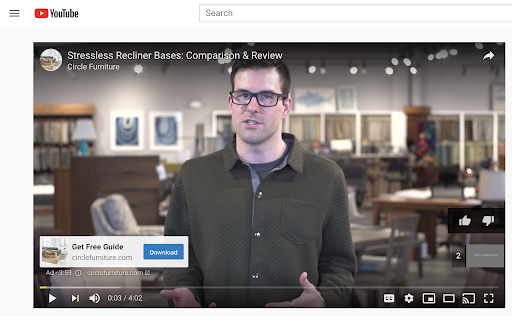
YouTube Ad — Circle Furniture
The reach is pretty vast.
Wherever and whenever you want it, we can put an ad. There is the opportunity to prospect. Google has gotten really good at opening up customization of audiences. We all have our patterns of behavior online. If you fit my client’s needs, we can target you.
Ali: The real magic comes into play when you run both Google Ads and Facebook Ads.
We have seen so much success with this that we only engage with clients who are running ads on multiple platforms. We call it omni—channel ads management.
Neither platform alone is better at reach and targeting than when they combine forces.
🔎 Related: What is omni-channel marketing? (a paid media beginner's guide)
Local business application
John: How do these platforms serve for local businesses?
Jason: This is a bit of a gray space, but I will say this: Express is well built for local businesses. The brick and mortar that wants to get foot traffic in the door, Google Ads is great because it plays well with Maps, and with Google My Business.
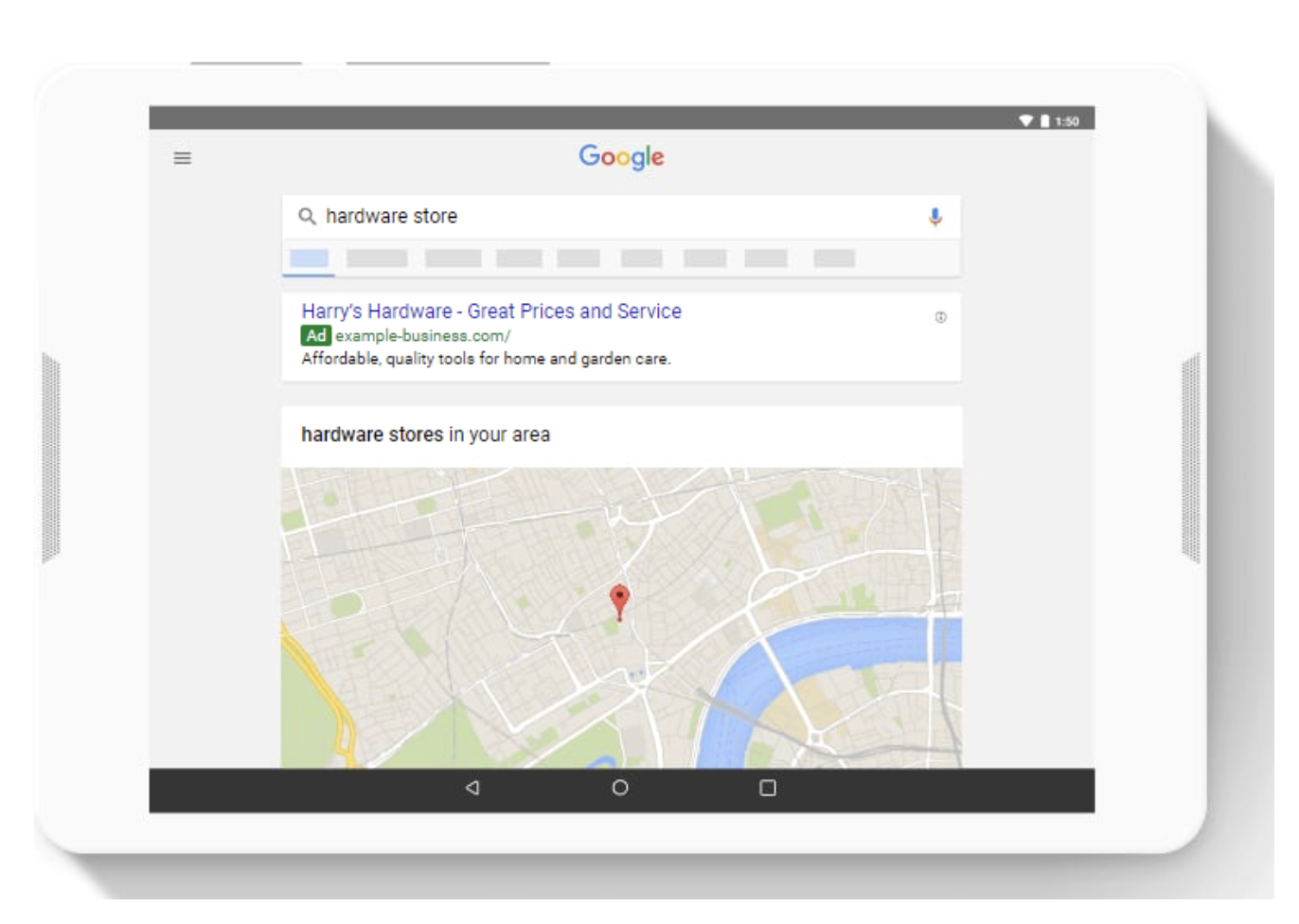 Google Ads Express for Local Business: Credit WordStream
Google Ads Express for Local Business: Credit WordStream
Outside of that, it's the same principle as other platforms: we could drop a pin, we could do a radius, we could do the targeting from your business location.
If you're two blocks away from my store, and you're googling a product I sell, we’ll make sure that my ad gets there.
Ali: This sounds bad, but I don’t work with many small businesses because they can't put enough ad spend into Facebook to get any real learning.
They only want to spend $500 a month, which is fine, but you're going to need like eight months to get any benchmarks in place to know what's going to work.
John: You’ve previously said that businesses should expect to spend $3,000/month on the platform. If not, then it's not the platform for them.
Ali: Facebook is trying to make some headway competing for local brick and mortar—type businesses, but they're going after businesses with multiple locations.
For local businesses that don’t have a big budget, you can always produce great content, and if you have a post that’s doing well, you can take that and turn it into an ad.
Jason: The problem with any local ad is attribution. How do you know if your ads are driving foot traffic?
Google recently dipped its toe into this water by creating beacons. The idea is that these beacons sit in a store, and when a person physically walks in the store, it beeps and knows you are in the store.
![]()
So, you can push ads out, supposedly, when someone is in proximity.
Engagement
John: Let’s talk about engagement — click through rate (CTR) and conversion rate.
Ali: Similar to CPC, you have all of your standard benchmarks that are industry—wide. I know for a click—through rate, I want it at 1% or better. If it's not at 1%, then there's something wrong with the messaging, with the imagery that we're using. That's mostly for cold audiences.
If you're retargeting, you should definitely expect a higher CTR. You should be seeing 3—4% for CTR.
On a side note, I always look at outbound CTR as opposed to regular CTR.
John: Can you explain the difference?
Ali: CTR includes any clicking actions on an ad, which could even be as simple as clicking to “show more.” Outbound CTR means you're clicking the link in the ad to go somewhere, and I want to know if I'm driving you to the site, so that's more important.
So click through rates always look for a minimum 1% for cold and around a 4% for retargeting.
And return — well, that also depends on the stage of your funnel and what's going on. If you’re talking about top of the funnel and you get a one—to—one, you should be thrilled.
Middle of funnel? Two, would be great. Bottom of funnel, hopefully well over a three. You have to think of your top of funnel as prospecting.
John: Can you explain what those numbers actually mean?
Ali: I'm looking at your return on ad spend (ROAS). This is where you're specifically looking at exactly how much you spent, versus how much revenue it generated.
It can sometimes be higher. For one of our clients, we actually have right now 2.71 at the top of funnel, which is phenomenal.
John: So, if they are spending $1, they're getting $2.71 back?
Ali: Exactly. I usually advise people to not turn off top of funnel, even if it's not converting revenue. This is where I'm looking at soft metrics— how many ‘add to carts’ I am getting. How many ‘initiate checkouts’ am I getting? How many people are sharing? How many people are saving the post?
I look at all those things, and if those numbers look good, and my raw ads still aren’t at a one for top of funnel, I'm cool with it, because I need those soft engagement metrics to eventually get enough people in the middle.
John: In terms of the rates that Ali mentioned, do you agree for Google?
Jason: Yes. The only difference is with display ads, because these are the Wild West of the internet. If you can get a 1% with a display ad, you're a rock star. The expectations are a lot lower there.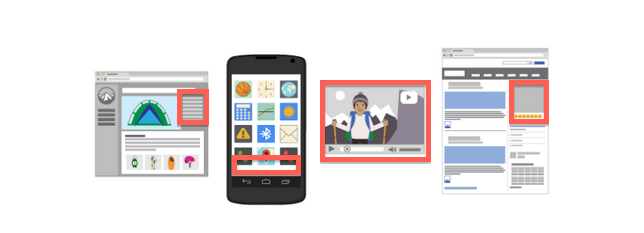

John: But it's cheaper, accordingly, right?
Jason: It is.
Why a blended approach is the best approach
John: Why does an omni—channel approach make sense to each of you?
Jason: I think that in today's atmosphere, all the devices, all the availability, everybody's going online to make their decisions, learning, and absorbing content.
I think that it is just silly to silo yourself to one channel. I think the way Google and Facebook hand off to each other and complement each other is incredible.
When we talk to clients about this, there's this big a—ha moment, and it's a visual.
There's a conversion path in Google Analytics that literally shows touch points, from feels to buys. And I say, “let me just show you your current conversion path” — and sometimes it can be 15 or 16 touch points in a user's journey to make that purchase. Their minds are blown because they think it's only one or two touch points.
It’s Facebook Ads and Google Ads that got them there. It’s always a more complex journey than you’d think.
If it was me, I would go heavier with Facebook first, with really bottom of the funnel because of how powerful that pixel is.
Ali: Clients do best when they use both channels together. Jason and I get our best results when we work together. We’re always monitoring, optimizing and shifting budget towards whatever is best serving the business in real time.
Free: Assessment

